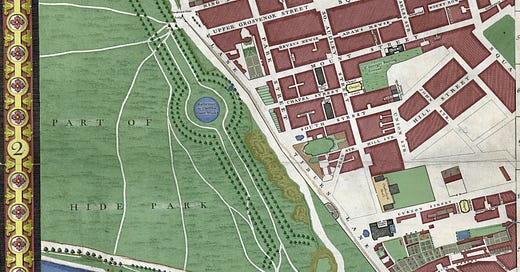Welcome to Londonist: Time Machine, the newsletter of London history.
And welcome to the latest instalment of my multi-year mission, to colour in the John Rocque map of London from 1746; every building, field, church, orchard, river, hill and tree. The map below has been around for more than a quarter of a millennium, but has always been black and white.…




